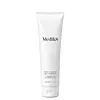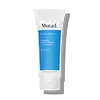What's inside
What's inside
 Key Ingredients
Key Ingredients

 Benefits
Benefits

 Concerns
Concerns

 Ingredients Side-by-side
Ingredients Side-by-side

Water
Skin ConditioningSodium C14-16 Olefin Sulfonate
CleansingSodium Cocoamphoacetate
CleansingCocamidopropyl Hydroxysultaine
CleansingGlycerin
HumectantMandelic Acid
AntimicrobialCitric Acid
BufferingIsopentyldiol
HumectantMaltodextrin
AbsorbentSodium Hydroxide
BufferingSalicylic Acid
MaskingLactic Acid
BufferingTrifolium Pratense Flower Extract
AstringentGarcinia Mangostana Peel Extract
Skin ConditioningPhenoxyethanol
PreservativeCitrus Aurantium Bergamia Fruit Oil
MaskingDisodium EDTA
Lavandula Angustifolia Herb Oil
PerfumingEthylhexylglycerin
Skin ConditioningMentha Viridis Leaf Oil
AstringentPogostemon Cablin Leaf Oil
MaskingLinalool
PerfumingLimonene
PerfumingWater, Sodium C14-16 Olefin Sulfonate, Sodium Cocoamphoacetate, Cocamidopropyl Hydroxysultaine, Glycerin, Mandelic Acid, Citric Acid, Isopentyldiol, Maltodextrin, Sodium Hydroxide, Salicylic Acid, Lactic Acid, Trifolium Pratense Flower Extract, Garcinia Mangostana Peel Extract, Phenoxyethanol, Citrus Aurantium Bergamia Fruit Oil, Disodium EDTA, Lavandula Angustifolia Herb Oil, Ethylhexylglycerin, Mentha Viridis Leaf Oil, Pogostemon Cablin Leaf Oil, Linalool, Limonene
Salicylic Acid 0.5%
MaskingWater
Skin ConditioningDisodium Cocoamphodiacetate
CleansingGlycerin
HumectantButylene Glycol
HumectantCetyl Alcohol
EmollientCocamidopropyl Betaine
CleansingPPG-15 Stearyl Ether
EmollientSodium Cocoyl Isethionate
CleansingGlyceryl Stearate
EmollientPEG-100 Stearate
Sodium Polyacrylate
AbsorbentSodium Hyaluronate
HumectantTocopheryl Acetate
AntioxidantCaprylic/Capric Triglyceride
MaskingRetinol
Skin ConditioningSalix Alba Bark Extract
AstringentAscorbic Acid
AntioxidantChitosan
Silver Citrate
AntimicrobialSodium PCA
HumectantBetaine
HumectantSorbitol
HumectantGlycine
BufferingAlanine
MaskingProline
Skin ConditioningSerine
MaskingThreonine
Arginine
MaskingLysine
Skin ConditioningGlutamic Acid
HumectantZinc Gluconate
Skin ConditioningArgania Spinosa Kernel Oil
EmollientSerenoa Serrulata Fruit Extract
Skin ConditioningSesamum Indicum Seed Oil
EmollientBeta-Sitosterol
Emulsion StabilisingCimicifuga Racemosa Root Extract
AntimicrobialMelaleuca Alternifolia Leaf Oil
AntioxidantCocamidopropyl Dimethylamine
EmulsifyingZea Mays Starch
AbsorbentHydrolyzed Corn Starch
HumectantHydrolyzed Corn Starch Octenylsuccinate
AbsorbentCitric Acid
BufferingDisodium EDTA
Propyl Gallate
AntioxidantPolysorbate 80
EmulsifyingMenthol
MaskingGlycol Distearate
EmollientSteareth-4
EmulsifyingPEG-150 Distearate
EmulsifyingPhenoxyethanol
PreservativeCaprylyl Glycol
EmollientChlorphenesin
AntimicrobialParfum
MaskingTea-Sulfate
BufferingSoy Protein Phthalate
EmollientGlutaral
PreservativeParaffinum Liquidum
EmollientFormaldehyde
Benzophenone-3
UV AbsorberPetrolatum
EmollientSalicylic Acid 0.5%, Water, Disodium Cocoamphodiacetate, Glycerin, Butylene Glycol, Cetyl Alcohol, Cocamidopropyl Betaine, PPG-15 Stearyl Ether, Sodium Cocoyl Isethionate, Glyceryl Stearate, PEG-100 Stearate, Sodium Polyacrylate, Sodium Hyaluronate, Tocopheryl Acetate, Caprylic/Capric Triglyceride, Retinol, Salix Alba Bark Extract, Ascorbic Acid, Chitosan, Silver Citrate, Sodium PCA, Betaine, Sorbitol, Glycine, Alanine, Proline, Serine, Threonine, Arginine, Lysine, Glutamic Acid, Zinc Gluconate, Argania Spinosa Kernel Oil, Serenoa Serrulata Fruit Extract, Sesamum Indicum Seed Oil, Beta-Sitosterol, Cimicifuga Racemosa Root Extract, Melaleuca Alternifolia Leaf Oil, Cocamidopropyl Dimethylamine, Zea Mays Starch, Hydrolyzed Corn Starch, Hydrolyzed Corn Starch Octenylsuccinate, Citric Acid, Disodium EDTA, Propyl Gallate, Polysorbate 80, Menthol, Glycol Distearate, Steareth-4, PEG-150 Distearate, Phenoxyethanol, Caprylyl Glycol, Chlorphenesin, Parfum, Tea-Sulfate, Soy Protein Phthalate, Glutaral, Paraffinum Liquidum, Formaldehyde, Benzophenone-3, Petrolatum
 Reviews
Reviews

Alternatives
Ingredients Explained
These ingredients are found in both products.
Ingredients higher up in an ingredient list are typically present in a larger amount.
Citric Acid is an alpha hydroxy acid (AHA) naturally found in citrus fruits like oranges, lemons, and limes.
Like other AHAs, citric acid can exfoliate skin by breaking down the bonds that hold dead skin cells together. This helps reveal smoother and brighter skin underneath.
However, this exfoliating effect only happens at high concentrations (20%) which can be hard to find in cosmetic products.
Due to this, citric acid is usually included in small amounts as a pH adjuster. This helps keep products slightly more acidic and compatible with skin's natural pH.
In skincare formulas, citric acid can:
While it can provide some skin benefits, research shows lactic acid and glycolic acid are generally more effective and less irritating exfoliants.
Most citric acid used in skincare today is made by fermenting sugars (usually from molasses). This synthetic version is identical to the natural citrus form but easier to stabilize and use in formulations.
Read more about some other popular AHA's here:
Learn more about Citric AcidDisodium EDTA plays a role in making products more stable by aiding other preservatives.
It is a chelating agent, meaning it neutralizes metal ions that may be found in a product.
Disodium EDTA is a salt of edetic acid and is found to be safe in cosmetic ingredients.
Learn more about Disodium EDTAGlycerin is already naturally found in your skin. It helps moisturize and protect your skin.
A study from 2016 found glycerin to be more effective as a humectant than AHAs and hyaluronic acid.
As a humectant, it helps the skin stay hydrated by pulling moisture to your skin. The low molecular weight of glycerin allows it to pull moisture into the deeper layers of your skin.
Hydrated skin improves your skin barrier; Your skin barrier helps protect against irritants and bacteria.
Glycerin has also been found to have antimicrobial and antiviral properties. Due to these properties, glycerin is often used in wound and burn treatments.
In cosmetics, glycerin is usually derived from plants such as soybean or palm. However, it can also be sourced from animals, such as tallow or animal fat.
This ingredient is organic, colorless, odorless, and non-toxic.
Glycerin is the name for this ingredient in American English. British English uses Glycerol/Glycerine.
Learn more about GlycerinPhenoxyethanol is a preservative that has germicide, antimicrobial, and aromatic properties. Studies show that phenoxyethanol can prevent microbial growth. By itself, it has a scent that is similar to that of a rose.
It's often used in formulations along with Caprylyl Glycol to preserve the shelf life of products.
Salicylic Acid (also known as beta hydroxy acid or BHA) is a well-known ingredient for treating skin that struggles with acne and clogged pores. It exfoliates both the skin's surface and deep within the pores to help clear out buildup, control oil, and reduce inflammation.
Unlike AHAs (alpha hydroxy acids), salicylic acid is oil-soluble. This allows it to penetrate into pores which makes it especially effective for treating blackheads and preventing future breakouts.
Salicylic acid is also known for its soothing properties. It has a similar structure to aspirin and can calm inflamed or irritated skin, making it a good option for acne-prone skin that is also sensitive.
Concentrations of 0.5-2% are recognized by the U.S. FDA as an over-the-counter topical acne product.
It can cause irritation and/or dryness if one's skin already has a compromised moisture barrier, so it's best to focus on repairing that before introducing this ingredient into your routine.
While salicylic acid does not increase sun sensitivity, it’s still important to wear sunscreen daily to protect your skin.
If you are looking for the ingredient called BHA or Butylated Hydroxyanisole, click here.
Learn more about Salicylic AcidWater. It's the most common cosmetic ingredient of all. You'll usually see it at the top of ingredient lists, meaning that it makes up the largest part of the product.
So why is it so popular? Water most often acts as a solvent - this means that it helps dissolve other ingredients into the formulation.
You'll also recognize water as that liquid we all need to stay alive. If you see this, drink a glass of water. Stay hydrated!
Learn more about Water